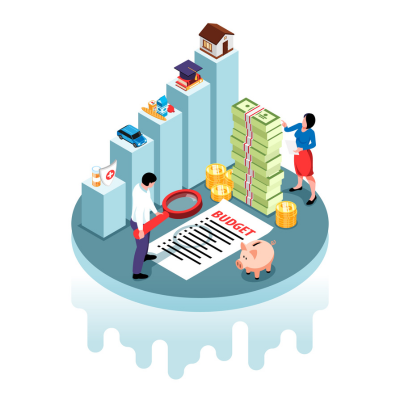Inflation is a concern that affects economies worldwide, and small businesses are no exception. As we delve into it, small business owners need to understand what causes inflation and how to navigate it effectively.
Inflation is a complex economic phenomenon with various causes. The most common factors are increased demand outpacing supply, rising production costs, expansionary monetary policies like lower interest rates and increased money supply, and excessive government spending without adequate revenue.
This blog post will look at the many effects of inflation on businesses, how inflation affects small businesses in particular, and guides in managing its effects.
Keep reading to learn how does inflation affect business investment both negatively and positively.
Impact of Inflation on Small Businesses
Inflation may cause you some setbacks like these:
- Higher Costs: Raw materials, inventory, rent, labor – everything seems to be inflating, squeezing your profit margins and testing your budget.
- Decreased Consumer Confidence: With wallets feeling lighter, consumers might tighten their belts, impacting your sales and revenue.
- Hiring Challenges: Attracting and retaining talent becomes more expensive, making finding the right people to fuel your growth harder.
Inflation, the rate at which the general level of prices for goods and services rises and, subsequently, purchasing power falls, significantly impacts small businesses. As inflation rises, every aspect of a business becomes more expensive.
For example, higher costs of services can affect the amount of cash you have on hand. Cost increases might force you to forgo large expenditures while cutting everywhere possible.
How Inflation Affects Business Decisions
Inflation affects business decisions in several ways. For instance, when inflation is out of control, it can greatly affect your ability to plan for the future. Not knowing, for instance, where prices will likely be six months from now can affect your ability to budget.
It also can increase concern among your customers, and they might curtail their planned spending, which can hurt you in the form of lost business.
Inflation can influence various business decisions, including:
- Pricing Strategies: Small businesses may need to adjust pricing to maintain profitability, which can impact customer behavior.
- Inventory Management: Businesses may rethink inventory levels to reduce holding costs and avoid overstocking.
- Investments: The economic climate and inflation expectations may influence decisions regarding capital expenditures and expansion plans.
- Employee Compensation: Businesses may adjust wages to keep up with rising living costs.
Negative Effects Of Inflation On Businesses
Negative effects of inflation on businesses include the increased cost of goods and services, which can lead to increased operating costs and decreased profit margins.
Inflation can also lead to higher customer prices, reducing sales and profitability. Furthermore, inflation can lead to increased competition as businesses try to maintain profitability.
Inflation can have detrimental effects on small businesses, such as:
- Reduced Profit Margins: Rising costs can squeeze profit margins, making it challenging to maintain profitability.
- Cash Flow Issues: Managing cash flow becomes more complex as the purchasing power of incoming revenue diminishes.
- Uncertainty: Rapid inflation can create economic instability, affecting consumer spending and business planning.
- Increased Borrowing Costs: Rising interest rates can lead to higher borrowing costs for businesses with loans or credit lines.
If left unchecked, inflation can be a formidable foe:
- Cash Flow Issues: Rising costs can lead to strained cash flow, making it difficult to meet your financial obligations.
- Reduced Profitability: Your profit margin shrinks as costs rise, impacting your ability to reinvest and grow.
- Increased Debt: You might use borrowing to cover expenses, adding to your financial burden.
Positive Effects Of Inflation On Businesses
While inflation has negative effects, it can also positively affect businesses. For example, inflation can increase demand for goods and services as consumers seek to maintain their purchasing power.
Additionally, inflation can lead to increased investment in businesses as investors seek to maintain their returns. Furthermore, inflation can lead to increased demand for businesses that can adapt to changing market conditions:
- Increased Revenue: Inflation can lead to higher prices, potentially increasing revenue for businesses with pricing power.
- Asset Appreciation: Business assets like real estate may appreciate during periods of inflation.
- Debt Relief: If a business has fixed-rate loans, the actual cost of debt may decrease in an inflationary environment.
- Increased Demand for Certain Products: If you offer essential goods or services, inflation can boost your sales as consumers prioritize them.
- Debt Reduction: If you have fixed-rate debt, inflation can make it easier to repay as the value of your debt decreases over time.
- Innovation and Efficiency: Inflation can incentivize businesses to become more innovative and efficient to maintain profitability.
How Your Small Business Can Navigate Inflation With Ease
To navigate inflation with ease, small businesses can take several steps. First, businesses should focus on controlling their costs without sacrificing quality.
This can be achieved by negotiating better prices with suppliers, improving operational efficiency, and reducing waste.
Second, businesses should manage expectations with customers to allow for reasonable price increases.
Finally, businesses should adjust their plans to meet the increased cost of doing business. This can include planning for increased costs of goods and services, investing in new technology to improve operational efficiency, and diversifying their product or service offerings.
To navigate inflation effectively, consider the following strategies:
- Pricing Strategy: Review and adjust pricing to reflect increased costs while remaining competitive.
- Cost Management: Identify areas to cut costs, renegotiate contracts, and optimize operations.
- Cash Flow Management: Maintain a robust cash flow management system to ensure your business can cover expenses and seize opportunities.
- Diversify Revenue Streams: Explore opportunities to diversify income sources to mitigate the impact of inflation.
- Financial Planning: Develop a financial plan that accounts for inflation and includes strategies for addressing rising costs.
- Consider Financing: Explore financing options that align with your business’s growth plans and consider the impact of interest rates.
- Monitor Economic Indicators: To make business decisions and stay informed about economic indicators and inflation rates.
While inflation can present challenges for small businesses, proactive management, and strategic planning can help mitigate its negative effects and capitalize on potential opportunities.














